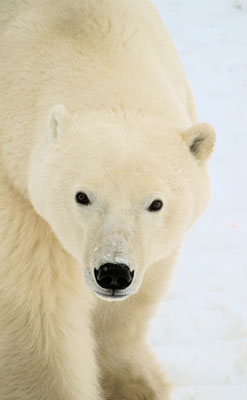All Nonfiction
- Bullying
- Books
- Academic
- Author Interviews
- Celebrity interviews
- College Articles
- College Essays
- Educator of the Year
- Heroes
- Interviews
- Memoir
- Personal Experience
- Sports
- Travel & Culture
All Opinions
- Bullying
- Current Events / Politics
- Discrimination
- Drugs / Alcohol / Smoking
- Entertainment / Celebrities
- Environment
- Love / Relationships
- Movies / Music / TV
- Pop Culture / Trends
- School / College
- Social Issues / Civics
- Spirituality / Religion
- Sports / Hobbies
All Hot Topics
- Bullying
- Community Service
- Environment
- Health
- Letters to the Editor
- Pride & Prejudice
- What Matters
- Back
Summer Guide
- Program Links
- Program Reviews
- Back
College Guide
- College Links
- College Reviews
- College Essays
- College Articles
- Back
Polar Bears
Polar bears, also called Ursus maritimus, are fascinating animals. They weigh anywhere from 800 pounds to 1,300 pounds and are six to nine feet long. This is why Polar bears live for about 20-25 years.The polar bear is the largest and the most carnivorous member of the bear family.
Sixty percent of the polar bear’s on earth live in Canada and Alaska. They can also be found in Greenland, Russia, and Norway. Polar bears live on the sea ice in the Arctic Ocean. They live on the sea ice because they can hunt seals in the ocean. Polar bears mostly eat ringed seals and bearded seals because they need a lot of fat to survive. They also eat walrus, beluga whale, and bowhead whale carcasses, birds’ eggs, and some vegetarian foods. Polar bears spend half of their time hunting and looking for food. They walk and swim extremely long distances to find food to eat. Only a few of their hunts are successful and they find some food.
Polar bears are going endangered and there are only about 23,000 left on the planet Earth. They are going endangered mostly because of climate change. The sea ice is beginning to melt in the Arctic and the polar bears go on the sea ice to hunt seals. Since the sea ice is melting, the polar bears can’t go to hunt seals until the sea ice refreezes during the winter. Polar bears are are also dying of malnutrition and starvation. In some places of the Arctic, polar bears are dying because of poaching. People are going to the Arctic and hunting illegally for polar bears. They are hunting for polar bears in the places where there are not a lot of polar bears.
Pregnant polar bears need to eat a lot in the summer and fall to build up enough fat to survive the denning period. The denning period is when pregnant polar bears go out and find maternity dens to stay in the winter time. They go to find dens in October or November to get ready for the denning period. Most maternity dens are located on land where there is piles of snow along coastal bluffs, river banks or pressure ridges on sea ice. The pregnant polar bears give birth to usually 1 or 2 one-pound cubs and then nurse them until they reach about 20-30 pounds before coming out from the den in March or April. The young cubs are born anywhere from November to January. When the young cubs are being born, the mothers of the cubs are hibernating. Cubs will stay with their mothers for a little over 2 years until they are ready to go out in the arctic on their own. Female polar bears can not reproduce so many polar bears in their lifetime. They have one of the lowest reproductive rates of any mammal.
Polar bears help us know what is happening in the arctic. If a polar bear is at risk, it may signal something that something else in the arctic ecosystem is wrong because that could be the reason why the polar bear is at risk. That is why polar bears are important to the world.

Similar Articles
JOIN THE DISCUSSION
This article has 0 comments.
